Stinkweed
- Mustard (Brassicaceae family):
- Thlaspi arvense L.
- EPPO code:
- THLAR
- Other names:
- Field pennycress, pennycress, frenchweed
Species information
- Lifecycle:
- Annual or winter annual.
- Propagation:
- Reproduces by seed.
- Emergence:
- Typically, stinkweed germinates and emerges in the fall or early spring.
- Habitat:
- Stinkweed is found throughout Ontario, but most commonly in winter cereal crops and much less frequently in corn, soybeans and edible beans.
- Competitiveness:
- Little to no data exists on the competitiveness of stinkweed, but one can assume that its competitiveness is similar to that of wild mustard. Stinkweed likely has very little yield impact to winter cereals, the crop that it is most often found in. The main concern with this weed is its garlic/chive like odour, which can taint milk if consumed by dairy cattle.
Identification clues
Seedling
- Cotyledons:
- orbicular to oblong with a very short stalk.
- First leaves:
- Stinkweed’s first leaves emerge as a basal rosette, which are oval with wavy margins and a rounded apex (tip). When its leaves are crushed, the plant gives off a distinct garlic/chive-like odour.
- Mature leaves:
- Mature leaves have an alternate leaf orientation. The leaves, which clasp the stem, are shallow to deeply toothed, have a pointed apex, and a distinct garlic/chive-like odour when crushed.
Mature plant
- Stem:
- Stinkweed’s stem is erect, 10–60 cm tall, hairless and much branched near the top.
- Flowers:
- Its flowers are very small, white and grow in clusters at the end of the branches. Each flower consists of four petals.
- Fruit:
- Stinkweed seedpods are flat, round and almost penny shaped. The top of the seedpod has a deep notch, and the seedpod itself contains two compartments that house numerous small, rust-coloured seeds.
- Roots:
- Taproot.
Often mistaken for
I know it's not Field peppergrass because stinkweed is smooth and hairless, while field peppergrass is roughly textured and is densely hairy. Also, field peppergrass does not have a distinct odour when crushed.
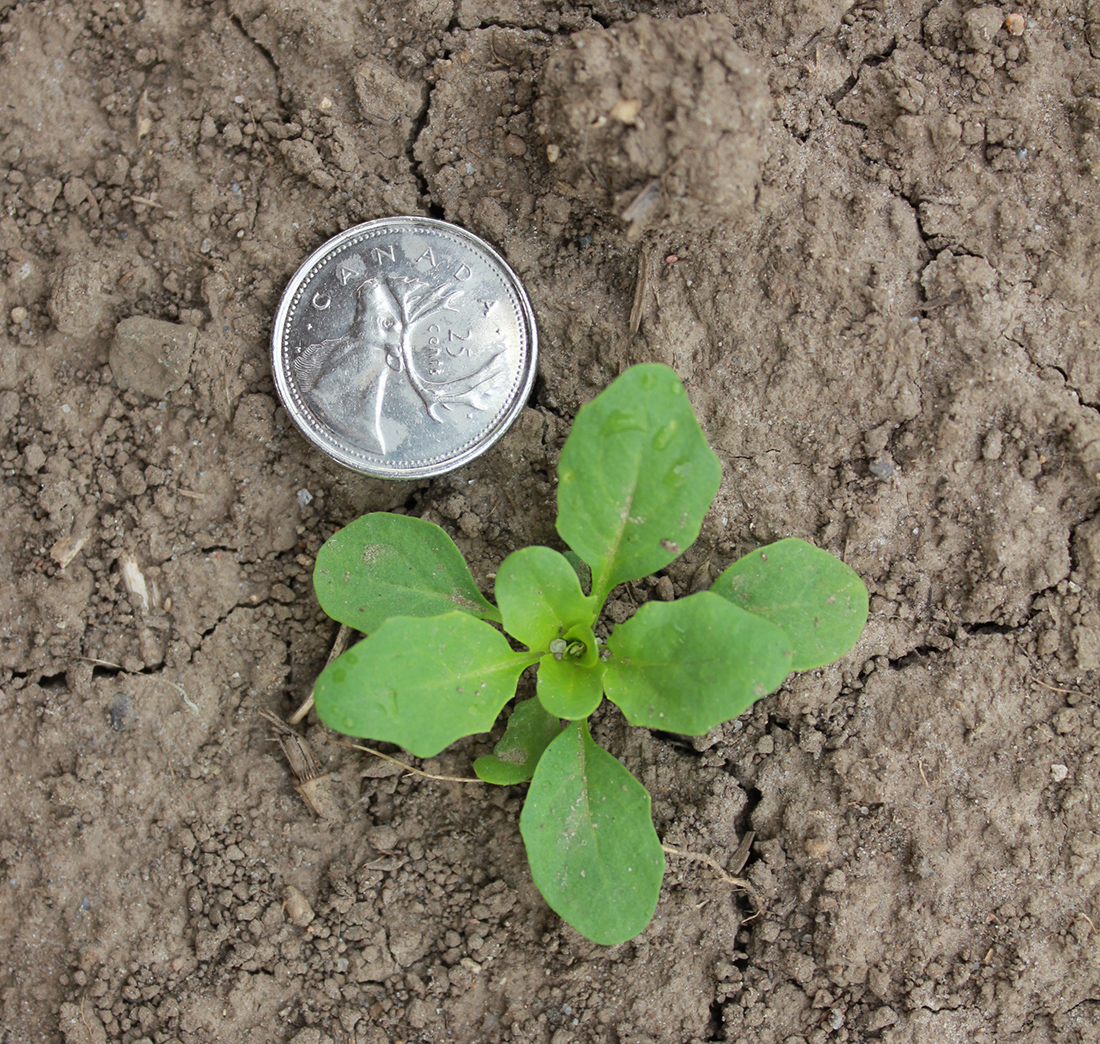
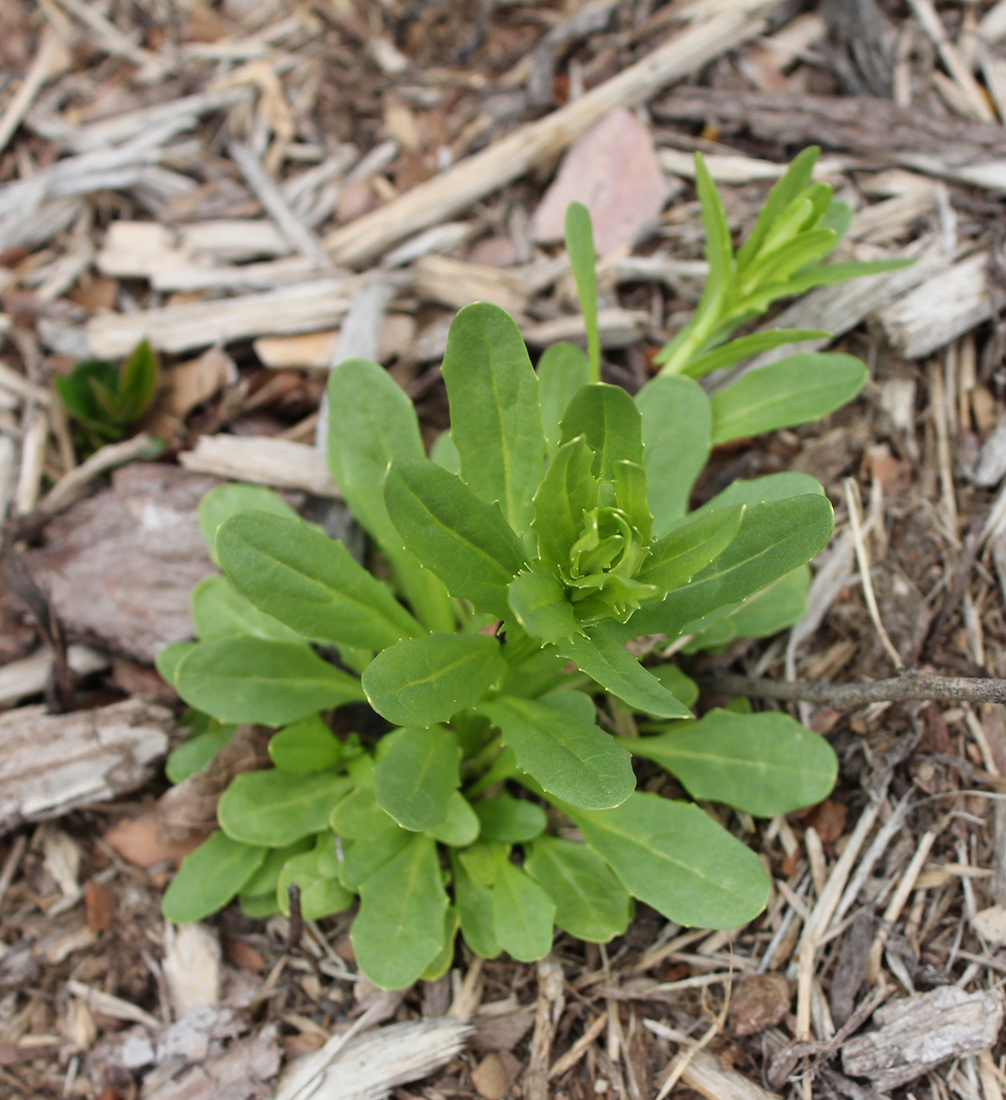
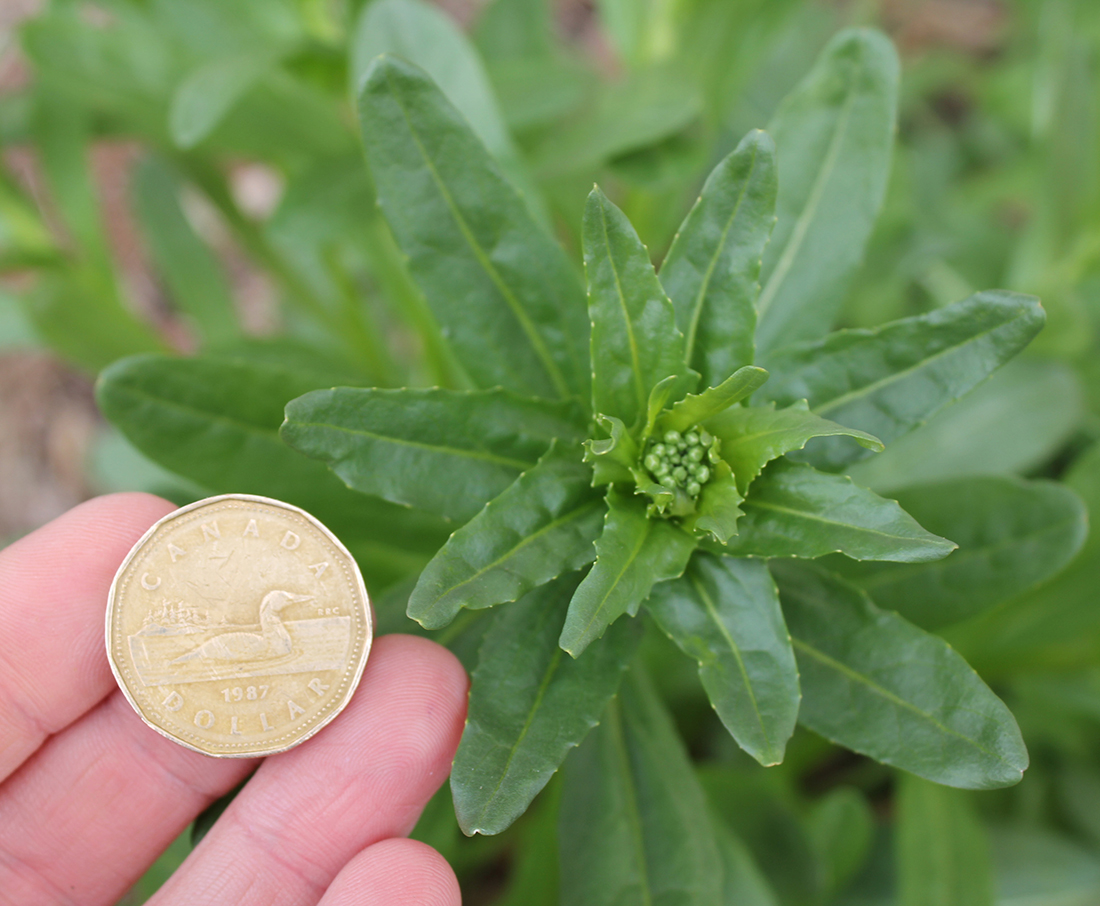
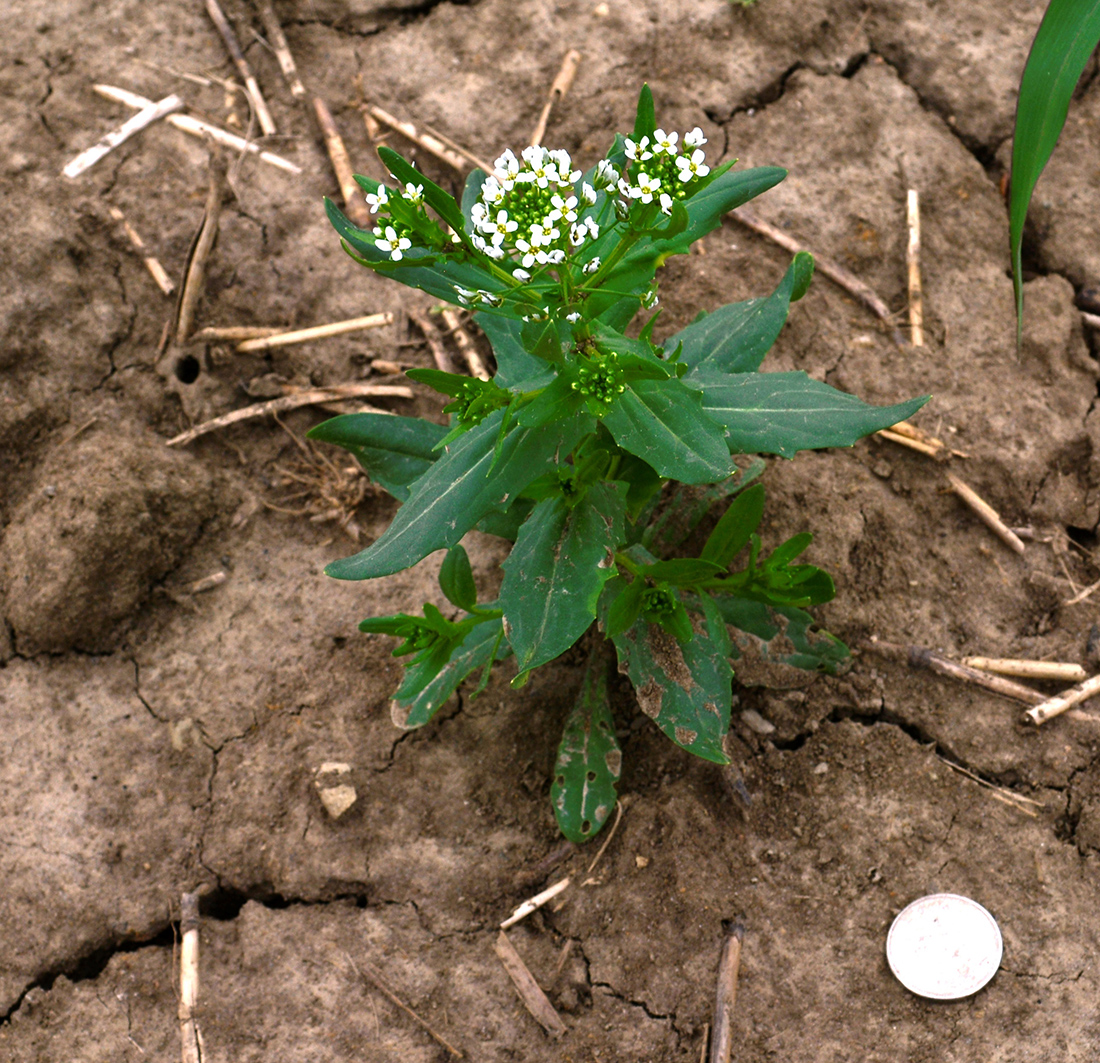
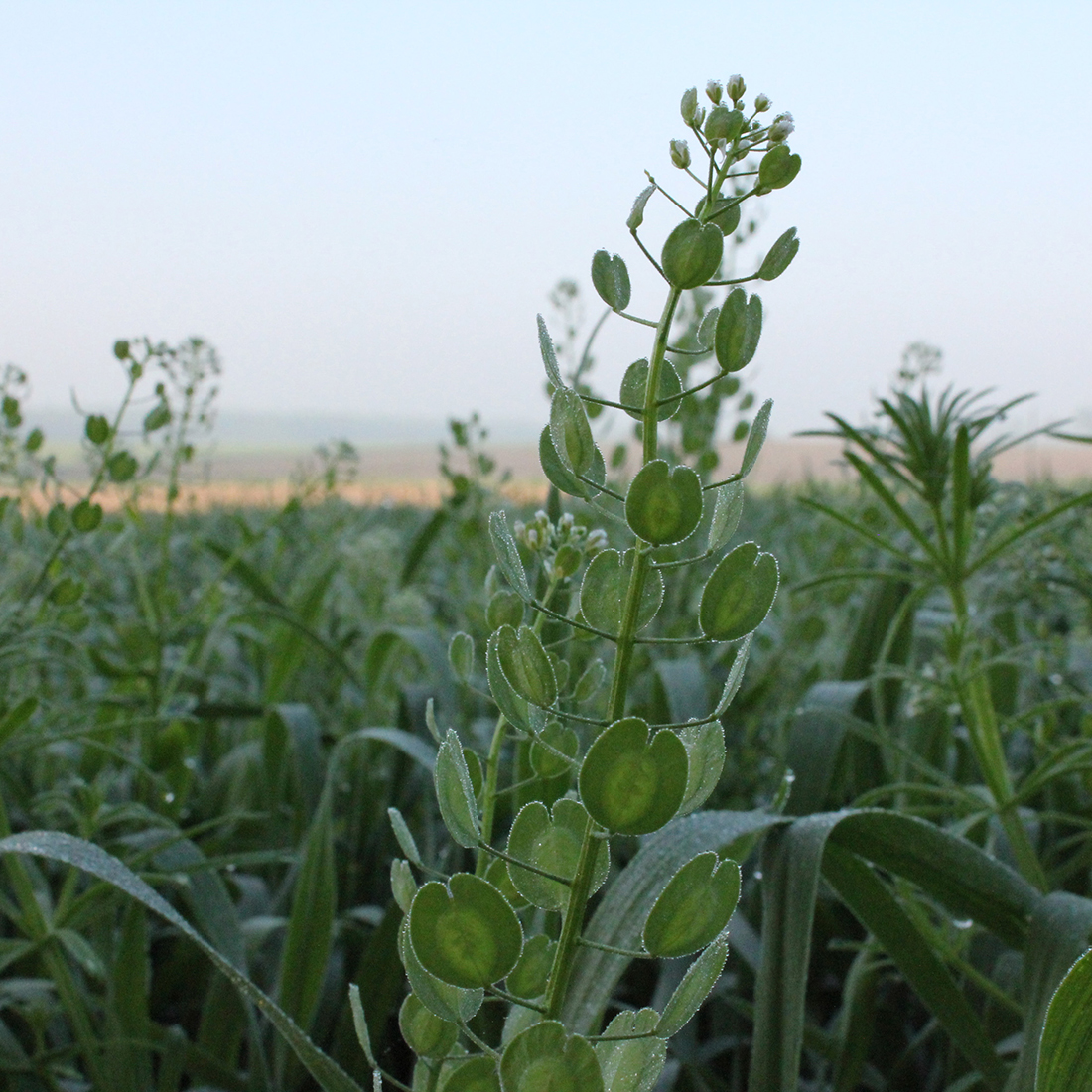
Updated: January 13, 2023
Published: January 13, 2023